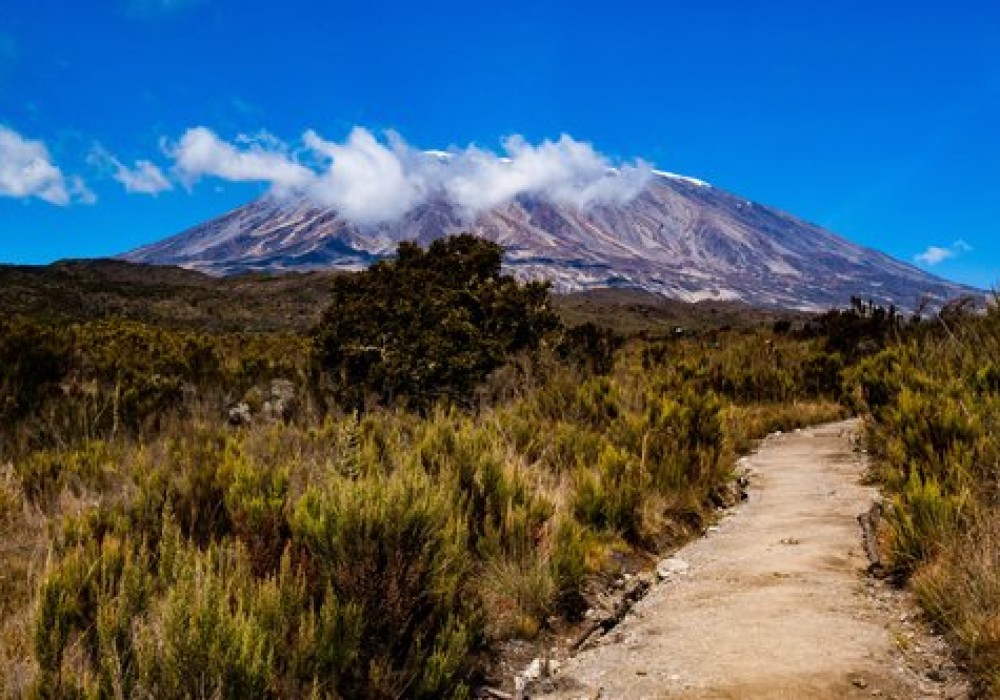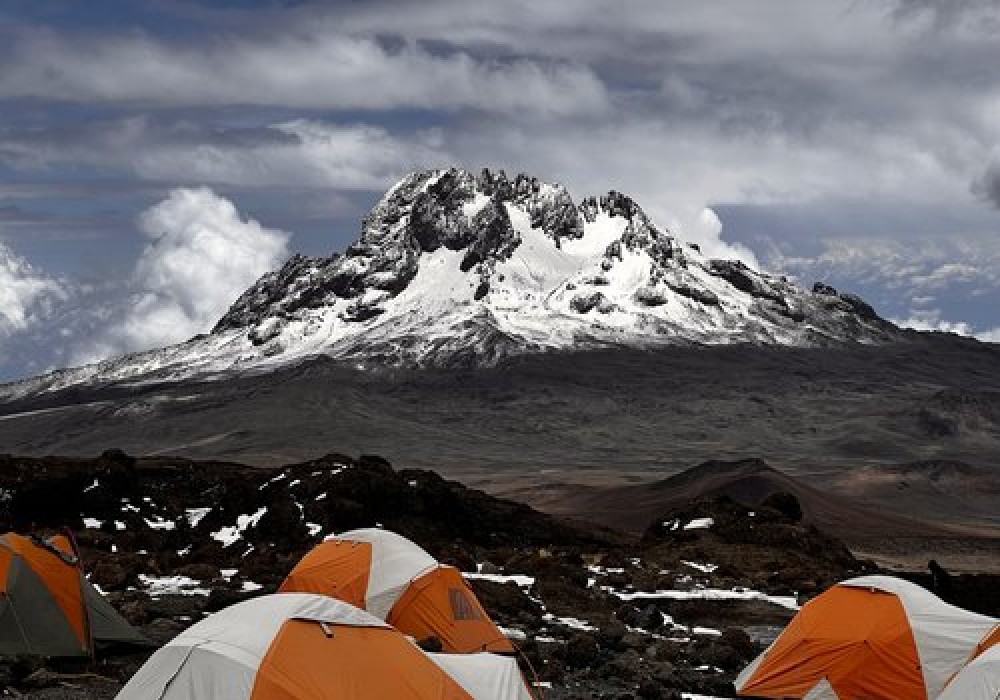MACHAME ROUTE KILIMANJARO


The Machame route, also known as the “Whiskey” route, is a six or seven-day camping route and is the most popular route on Kilimanjaro. This trail offers stunning views, a reasonable challenge, and plenty of time to acclimate, making it a good choice for those who have a bit of extra time in their schedule.
According to statistics from Kilimanjaro National Park, approximately 35% of all climbers on the mountain use it.
Machame route uhuru peak
Machame route has been nicknamed the “Whiskey Route” because it is often perceived as being tougher than Marangu route, which is often referred to as the “Coca-Cola” route. Unlike that trail, however, camping is allowed on Machame, which means trekkers will be sleeping in tents all the way to the summit.
Trekkers who take the Machame Route pass several well known Mount Kilimanjaro landmarks while en route, including the famed Lava Tower and Shira Plateau. The route wanders up and down a series of valleys and ridges, which make the walk a bit more strenuous, but rewards hikers with some of the best views on the mountain.
It is for that reason that the Machame route is widely considered to be the most scenic of all of the routes up Mount Kilimanjaro, providing unique and varied landscapes to pass through on each and every day. The trail starts on the south side of the mountain, passes underneath the Southern Ice Field, and makes its summit approach from the Barafu Camp.
Machame route 3D Video Trail Overview
For travelers who have a few extra days in their schedule, the Machame route is an excellent option. One or two additional days of acclimatization can make a big difference in the success rate, so trekkers who choose this route reach the summit more often, despite the fact that this is a more challenging hike than the Marangu route.
One of the biggest and most intimidating of those challenges is the Barranco Wall, a steep cliff face that can look quite scary upon first approach. In reality, Barranco isn’t nearly as frightening or difficult as it first appears, although you will have to watch your step, and possibly use your hands for extra leverage while scrambling over certain sections. The climb usually takes about an hour to an hour and a half to complete, and the view from the top makes it worth the effort.
The downside of the Machame Route is that it can get crowded at times. Because it is so scenic and offers a few extra days to acclimate, it is a popular choice for Kilimanjaro trekkers, which can make the trail and campsites very busy, particularly during the high season.
Still, if you’re looking for the quintessential Kilimanjaro experience, it is difficult to beat the Machame route.
Climbing Kilimanjaro offers Machame as a seven day climb or as a six day climb. The six day variation combines days four and five, going from Barranco Camp to Barafu Camp without staying at Karanga. You Skip Karanga Camp
Machame Route 7 days Itinerary Overview
Starting from Machame Gate to the summit and finishing at Mweka Gate. For a day-by-day itinerary for the Machame Route, please click on this link: 7 day Machame Route
Machame route Itinerary
Machame Route Detailed Itinerary
The itinerary below describes the 6-night/7-day Kilimanjaro climb via the Machame route. To shorten the below itinerary to six days, skip the night in the Karanga Valley and instead walk straight from the Barranco Huts to the Barafu Huts in one day.Machame Route Campsite
Duration: 6 nights /7 days Climb
Day 1: Machame Hut Camp
A short drive brings us to the Machame trailhead (~5,380’). After the climbers and crew have checked in with the park rangers, we will hike up through the montane forests, winding up the mossy jungle, and making our way to Machame Hut camp.
- Hiking: 5-7 hours
- Overnight Altitude: ~9,350′
- Day 2: Shira Plateau
After breakfast, our hike continues through the forest. We will take our time, soaking in the scenery as we make our way through the moorlands. We will be treated to spectacular views of Kibo peak.
- Hiking: 4-6 hours
- Overnight Altitude: ~12,500′
- Day 3: Barranco Camp
Today is a long day but lots of acclimatization as you climb high, sleep low. We will take an acclimatization hike to Lava Tower (~15,190’) for lunch, before descending to the Barranco valley. For those who have energy, and if time and weather permit, there’s the possibility to scramble up the Lava Tower itself. The scenery is amazing today, passing through different zones of the mountain.
- Hiking: 6-8 hours
- Overnight Altitude: ~13,044′
- Day 4: Karanga Camp
Today you’ll continue to acclimatize and let your body adjust to these higher altitudes, in preparation for your upcoming summit push. Climb the steep Barranco Wall and then go up and down several ridges and valleys before arriving at Karanga camp. There will likely be time for an acclimatization hike in the afternoon.
- Hiking: 4-5 hours
- Overnight Altitude: ~13,106′
- Day 5: Barafu Camp
Today you’ll continue your circuit and arrive at your final camp before the summit (Barafu camp). There were some ups and downs along ridges and valleys along the way. You’ll have an early supper, sleep for a few hours, and then arise at about 11:00 PM to start tomorrow’s summit ascent.
- Hiking: 3-4 hours
- Overnight Altitude: ~15,331′
- Day 6: Summit and Mweka Camp
Start hiking at around midnight, using your headlamps to lead the way slowly up to Stella Point and then the summit. Due to the altitude, you will hike slowly, and will need to dress warmly for the cold. After celebrating with photos at the summit, descend down to Mweka camp.
- Hiking: 6-7 hours of ascent to the summit, then 6-9 hours of descent
- Summit: ~19,341′
- Overnight Altitude: ~10,500′
- Day 7: Mweka Park Gate (~5,000’) to Arusha
We make the final descent through the rainforest to Mweka Gate. Here we will have lunch and say goodbye to our mountain crew before leaving Mount Kilimanjaro National Park. Drive back to Arusha for a hot shower and a celebratory dinner.
Hiking: 3-5 hours
Frequently asked questions
How difficult is the Machame Route?
The Machame route is considered one of the less difficult routes on Kilimanjaro as it’s longer itinerary allows for better acclimatization. However, hikers will still need to ascend the Barranco Wall and climb steeply on summit night. No technical climbing is required but a good level of fitness is highly recommended. You can read more on training to climb Kilimanjaro and our Kilimanjaro training program page to help you prepare accordingly.
What is the distance of the Machame Route and how many days does it take?
The approximately trekking distance for the Machame Route is 62 km or 37 miles the entire climb from trail head up to the summit and all the way down to Mweka gate. The shortest number of days required for Machame Route is 6 days, but by the time you have added on arrival and departure days it is 10. However, as it is a much longer approach route it is actually best done over 7 or 8 days to increase your changes of success.
What is the Machame Route Summit Success Rate?
Due to it’s climb high sleep low mechanism, summit success rates on the Machame route are very high. Whilst there are no official statistics, the average success rate across all operators is 85% for the 7 day trek and a 73% success rate for the 6 day trek. However, We have a 95% summit success rate for the Machame route. Read more about how many days it takes to climb Kilimanjaro to know why we recommend longer treks.
What is the scenery like on the Machame Route?
The scenery is extremely varied, and you will pass through five climatic zones on your way to the summit. The trek begins in rain forest on the lower slopes before continuing up into the low alpine zone of wild grasslands and moorlands.
From there you trek into the high alpine zone before reaching the glacial zone. You will encounter many incredible vistas and visit stunning places such as Shira Plateau, Barranco and Lava Tower.
When is the best time to Trek Machame Route?
July-September is the best time to climb Kilimanjaro, as the weather is most stable during this period and encountering rain is less likely. That said, since it is close to the equator it is possible to climb the mountain at any time of the year. April and May is the rainy season so this period is best avoided.
Include
- Accommodation & Logistics
- Airport transfers
- Two nights bed and breakfast hotel accommodation
- Return transfers to and from the Kilimanjaro gate
- Excess gear storage at the hotel
- KCC Operations Manager on standby for you during your stay
- Expedition briefing & equipment check
- Kilimanjaro park & camping fees
- Mountain rescue permit
- Staff wages
- Bilingual guides
- Expedition porters & cooks
- 3 hot meals per day & snacks at camp
- Uhuru Peak or Stella Point certificate of achievement
Safety & Equipment
- Helicopter evacuation
- Expedition First Aid Kit
- Medical oxygen and means of evacuation off the mountain
- High quality 3 man Berghaus expedition sleeping tents
- Mess tent with table & chairs
- Boiled water for drinking & washing
- Private toilet
Exclude
- Items & services NOT included
- International flights to and from Kilimanjaro
- Entry visa ($50 Europe/$100 USA), which can be obtained upon arrival
- Personal travel insurance (specific to high-altitude trekking and travel in rural Africa)
- Gratuities
- Vaccinations for travel to a region